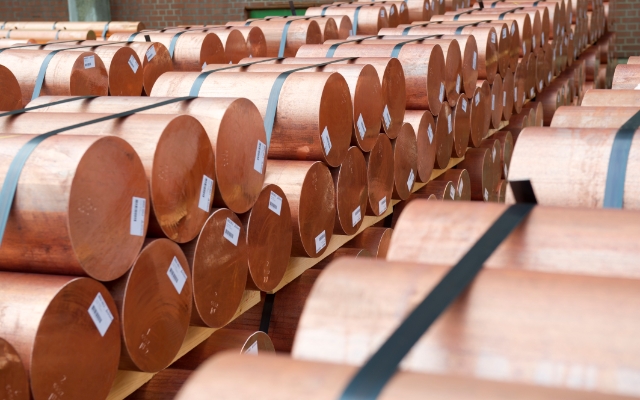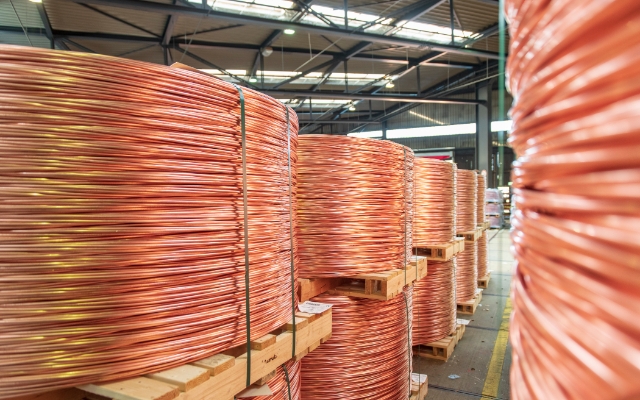Explore the Benefits of Using High-grade Copper Products for Home and Industry
Discovering the Diverse Applications of Copper Products in Modern Industries
Copper items have actually developed themselves as vital components across a myriad of modern-day industries, mainly as a result of their amazing conductivity, pliability, and resistance to rust. From enhancing the performance of electrical systems to playing a crucial role in renewable resource modern technologies, the adaptability of copper is evident. Its recyclability settings it as a sustainable choice in manufacturing and electronics. As markets progressively focus on development and sustainability, the diverse applications of copper call for a closer exam, particularly regarding their potential influence on future technological advancements and environmental techniques.
Electric Applications of Copper
Copper is a necessary product in the electric industry, making up around 60% of the complete demand for non-ferrous steels internationally - Copper Products. Its superior electrical conductivity, which is virtually twice that of light weight aluminum, makes it the preferred selection for a broad variety of electric applications. From circuitry systems in residential and business structures to high-voltage power transmission lines, copper makes sure efficiency and integrity in electrical energy delivery
Along with electrical wiring, copper is indispensable to the production of electric elements such as electric motors, generators, and transformers. These components leverage copper's thermal conductivity and malleability, necessary for warm dissipation and effective performance. Copper's resistance to deterioration enhances the lifespan and sturdiness of electric systems, making it a cost-effective remedy in the long term.
The growth of sustainable power sources, such as solar and wind power, has even more enhanced the need for copper in electric applications. As industries shift in the direction of sustainable energy services, copper's function ends up being also a lot more critical. Overall, the versatility and efficiency features of copper strengthen its standing as a keystone material within the electric field, driving technology and efficiency throughout numerous applications.
Plumbing and Piping Solutions
In contemporary pipes systems, the choice of materials substantially influences both performance and long life. Copper has emerged as a recommended alternative as a result of its unique residential or commercial properties, including deterioration resistance and antimicrobial features. These features ensure that copper piping remains long lasting and secure for carrying drinkable water, an important consideration in household and business applications.
Among the key advantages of copper in pipes is its ability to endure high temperature levels and pressures, making it appropriate for a selection of applications, from hot water systems to heating and cooling down networks. In addition, copper's versatility allows for easier installation in complex piping layouts, minimizing the threat of leaks and failures.
Another noteworthy benefit is copper's lengthy life-span, typically exceeding half a century with proper upkeep. This longevity not just reduces substitute costs but likewise adds to sustainable practices by lowering waste. Additionally, copper's recyclability straightens with modern-day environmental criteria, advertising a round economic climate within the pipes industry.
Copper in Renewable Energy
The versatility of copper extends beyond pipes applications, playing an essential duty in the sustainable energy sector. In solar panels, copper is utilized in photovoltaic or pv cells and wiring, assisting in reliable power conversion and transmission.

Moreover, as the worldwide demand for electric cars (EVs) boosts, copper's duty in battery systems and charging facilities comes to be even more substantial. The product's capacity to carry out electrical power successfully is integral to the performance of EV batteries, boosting variety and billing rate.
Copper's Duty in Electronics
Electronics making counts heavily on copper's remarkable buildings, especially its high electrical conductivity and thermal performance. These attributes make copper a suitable choice for a broad variety of digital elements, including adapters, motherboard, and electrical wiring. The metal's capacity to efficiently transfer electrical signals makes certain marginal energy loss, which is crucial in high-performance digital gadgets.
Additionally, copper's thermal conductivity plays a substantial duty in heat dissipation, safeguarding sensitive elements from overheating. This is specifically crucial in modern electronic devices, where small styles cause increased warm generation. Copper is likewise preferred for its malleability and ductility, permitting it to be easily formed right into intricate layouts that satisfy the demands of sophisticated electronic applications.
With the increase of customer electronics, telecoms, and electric vehicles, the need for copper in the electronics field continues to expand. Thus, copper stays a keystone material in the ever-expanding field of electronic devices.
Ingenious Utilizes in Manufacturing

One remarkable application remains in additive manufacturing, where copper-based materials are employed in 3D printing procedures. This allows for the development of lightweight parts and complicated geometries, particularly in the aerospace and auto fields. Furthermore, copper's thermal conductivity makes it an optimal option for heat exchangers, enhancing efficiency in commercial air conditioning systems.
Furthermore, the surge of wise production has seen the unification of copper in IoT gadgets, where its conductive capacities sustain sophisticated picking up innovations. In the world of sustainable energy, copper is essential in the production of photovoltaic panels and wind turbines, assisting in extra reliable power conversion and distribution.
As industries pursue sustainability and advancement, copper's convenience and efficiency remain this website to place it as a crucial product, driving innovations in manufacturing and adding to the development of smarter, a lot more effective products.
Verdict
The indispensable role of copper in eco-friendly energy and its essential feature in electronic devices emphasize its relevance in progressing sustainable practices. Collectively, these applications illustrate copper's crucial payment to technical development and industrial effectiveness in modern society.
From enhancing the performance of electric systems to playing a vital function in renewable power innovations, the adaptability of copper is obvious. As sectors significantly prioritize innovation and sustainability, the varied applications of copper require a closer exam, especially regarding their possible effect on visit this site future ecological practices and technical advancements.
The development of sustainable power sources, such as solar and wind power, has additionally enhanced the need for copper in electrical applications. Overall, the adaptability and performance attributes of copper solidify its standing as a cornerstone product within the electrical market, driving technology and performance throughout various applications.
The convenience of copper extends hop over to these guys beyond pipes applications, playing an important function in the renewable power sector.